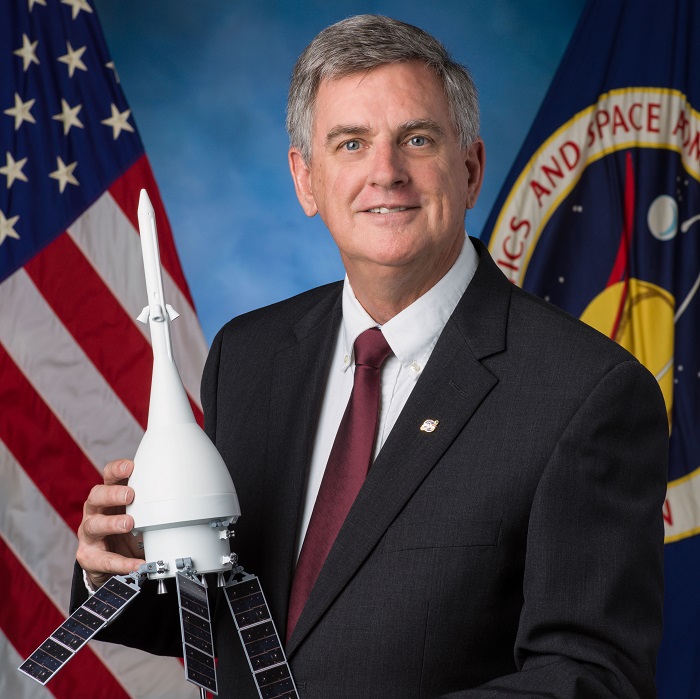[ad_1]
//php echo do_shortcode(‘[responsivevoice_button voice=”US English Male” buttontext=”Listen to Post”]’) ?>
The men who designed and crafted the first practical integrated circuit (IC), the type used in the computers to guide the Apollo spacecraft that made the first U.S. moon landing, were also the unintentional fathers of Silicon Valley.

“These are the people that changed the world,” David A. Laws, semiconductor curator of the Computer History Museum, told EE Times. “Everybody knew them. They were heroes in Silicon Valley.”
The Apollo contract was not the only reason for the transformation of the valley, but it was a major factor, according to an article on the Smithsonian’s National Air and Space Museum’s website.
The ICs and software used in the computers used in the Apollo missions had a limited job compared with the computers used in NASA’s current Artemis lunar missions, which use the Orion spacecraft.
“In Apollo, they had a lot of switches that took care of most of their functions, and they only used the computers for that little guidance and navigation control while they were landing on the moon,” Matt Lemke, NASA’s manager for Orion avionics, power and software, told EE Times. “In Orion today, everything is computer-controlled, with very few switches [to be used] just in the case of extreme emergencies where they have to bypass a computer.”

There are other differences.
Orion is equipped with four computers made by Honeywell and equipped with IBM PowerPC 750X single-core processors. Its software is written by Lockheed Martin.
All four computers “run the same code, and we check them bit for bit to make sure their outputs are good,” Lemke said. “If the outputs are ever different, that computer ‘fails silent.’ So it quits transmitting, and that way, it never puts anything wrong out onto the vehicle’s bus.”

Orion withstood two radiation hits during the Artemis 1 unmanned lunar orbit mission in 2022, and one computer failed silent, Lemke said. It reset itself, and 20 seconds later, it rejoined the other computers.
The computers are the same type as those used in Boeing’s 787 aircraft, but Orion’s hardware is ruggedized for vibration, thermal and shock events. Some internal parts have been switched out for those whose materials have better radiation tolerance to withstand the effects of traveling through the Van Allen belt and deep space.
Also, the code for the computers’ operating system is partitioned for different systems like propulsion, navigation and life support—so that a failure in one part doesn’t affect other functions.
“They all think they’re flying the vehicle: Each one thinks they’re in charge,” Lemke said. “If any one has an upset for whatever reason, it fails silent, and the others that thought they were flying the vehicle, they fly the vehicle.”
MIT, Raytheon part of Apollo story
Even though Honeywell, IBM and Lockheed, one of Lockheed Martin’s predecessor companies, all existed at the time of Apollo, its Apollo Guidance Computers (AGCs) were designed by the Massachusetts Institute of Technology (MIT) and built by Raytheon. NASA commissioned two versions: The Block II device would benefit technologically from lessons learned during the use of the Block I computer in early unmanned flights.

This is what happened, according to an article that Laws, a storyteller and former Fairchild Semiconductor marketing employee, wrote for the Computer History Museum’s website:
The AGCs used ICs, or chips, created and designed at Fairchild. Fairchild licensed the design to Philco-Ford, which produced most of the 800,000 units in the Block II computers used in all manned space missions, including the first moon landing in 1969.
A Block I computer, which had been reduced to the allotted two cubic feet from multiple refrigerator-sized cabinets, flew on the unmanned Apollo 4 and 6 missions.
Block II used 2,756 flat-pack chips with 5,530 logic gates implemented with 16,536 transistors. Many other silicon chips, including thousands of discrete transistors in other pieces of equipment, flew on Apollo 11. Notable examples include analog ICs built by Westinghouse to control the camera that sent TV signals to Earth of pioneering astronaut Neil Armstrong taking his “one small step for man, one giant leap for mankind.”
Two AGCs—one in the command module, the other in the lunar lander—flew with zero failures in nine lunar and five Earth-orbital missions.
Confounding critics who advised that ICs were unproven and too risky for such an important project, the computer gained the reputation of being the most reliable piece of electronic equipment on the spacecraft.
Far-flung influences
In 1971, two years after the first lunar landing in 1969, the term “Silicon Valley” appeared in print, possibly for the first time, according to an obituary for the writer credited with coining it.
In addition, the AGC project for the Apollo missions pioneered miniaturized electronics by shrinking a room-sized computer to the size of a briefcase, according to Laws’s article. It also made a huge leap forward in software development: For the first time, a software program was used in real time to control actions that could impact the lives of humans.

Humans also routinely benefit from developments that arose from the Apollo program just about every time they take a commercial flight.
“Think about the digital avionics that took place by proving you could safely fly a spacecraft to the moon … and actually get back to Earth safely,” said Paul Kostek, advisory systems engineer for Air Direct Solutions. “That whole concept proves that you could put digital avionics on an airplane and safely fly that airplane. Airplanes now have millions and millions of lines of code in them.”
[ad_2]
Source link

